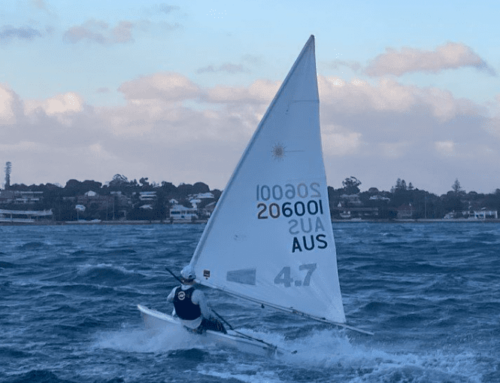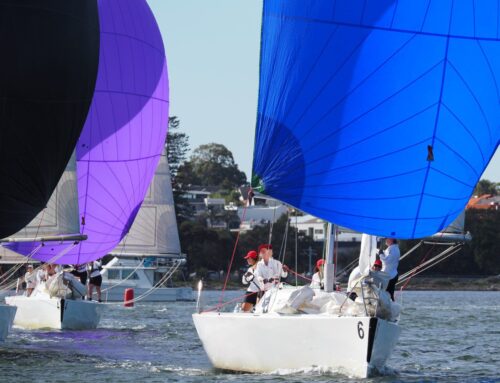Sailing Rules and Etiquette
This is a different sort of article for me. I’ve had some discussions recently with a couple of members relating to rules on the water and enjoyment of sailing. It stirred a lot of thoughts in my mind of experiences over a very long time.
I think my first experience of a protest was losing a race after being protested for doing a 720 degree turn not immediately. I wasn’t too fussed about it. I appreciated the lesson, but I do remember a lot of parents being caught up in discussions about it. On balance it was the correct decision, and I’ve seen many sailors and families go through the same experience.
Those that do the training get taught early when it doesn’t matter.
Another experience was in the early days of professional match racing when the rules allowed collisions. It was in the Grundig Cup and I was sailing with Ian Murray, Peter Gilmore, and the rest of the Kookaburra AC team. In those days, Peter changed the concept of “Gentlemen’s” match racing into fierce rules-based racing. In the pre-start we lined up Harold Cudmore and were on starboard as the right of way boat. Our masts collided and we lost our rig and destroyed the sails.
Even though we caused the incident, we were completely in the right, won the protest, managed to get a new boat, new sails which gave us an edge to win the regatta and $100,000 in prize money.
After a number of collisions, the rules were changed to prevent collisions at all costs, which I think was the right decision.
Now that there are a lot of fast boats around that are expensive and potentially dangerous, now more than ever there is both an appreciation of the rules and a respect for each other at the high end of the sport.
Normally in the Olympic classes, the year after the Olympics the racing is a bit of a mess with new teams and younger teams being the rookies and not understanding the etiquette in place. There are a lot of collisions as teams get used to boat handling and respect for each other. The experienced teams stay out of harm’s way.
In the year prior to the Olympics the respect of each other improves and the racing is spectacular. There is an unwritten rule to respect each other, treat others how you would like to be treated.
In the Pre-start you often see a “butterfly” effect on the start line as boats jostle for a fair starting position. In tactics, most actions are known so there is mutual respect for the likely outcome.
The racing is won by subtle speed advantages, slightly better skills and slightly better strategy.
Compared to Club Racing, which due to less experience and losing sight of the bigger picture, often boats get into bad positions whilst trying to win a very small battle with one boat.
Club Racing, in general, has people of all sorts of different experience levels and I would encourage everyone to understand your competitor’s skill level and experience.
- If someone has experience with a lot of match racing, they are likely to pay attention to the rules side of racing. There is nothing wrong with this. It is their “normal”.
- Many sailors like to go fast and concentrate on the feel or speed aspects of sailing. Some don’t really care about the rules. Again, no problem with this but keep out of harms way at least understanding the rules.
Above all, enjoy our sport at your level and understand others might be equally enjoying the sport at their level.




